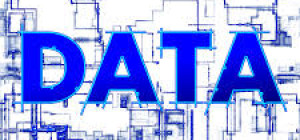Any crime that is committed using the internet, any computer technology or computer system is called Cybercrime. It has grown rampant in this digital age, even contributing to high crime rates in countries due to a large number of cybercrimes committed each year.
According to statistics, 400 million fall victim to cybercrime worldwide every year, making it a very pressing issue. It also has costly consequences, not just for businesses but for individual victims as well. Furthermore, a total of $113 B is lost each year due to cybercrimes
Cybercriminals have now evolved as cyber attacks are becoming more diverse and sophisticated. Read on to better understand cybercrimes and find out the types of criminals carrying out these attacks.
Cybercrimes Today
As technology advances, so do the types of cybercrimes that criminals commit. Here are the most common types of cybercrimes, with more being added to the list as criminals become more and more experienced, thereby requiring every individual’s vigilance in order to prevent these attacks.
Cybercrimes span from malware injection, phishing, identity theft and more.
Let's take a look at these types cybercrimes today and learn how to avoid them.
- Identity Theft. An identity gets stolen every 3 seconds. This is what makes it the most common cybercrime today. It is done through purporting to be someone, with the objective of committing fraud for financial gains. Sources of identity information come from the breach of government or federal records, including private sites which contain important information such as credit card information, address, email, etc. To prevent identity theft, be careful not to post your personal information on the internet, especially on social media.Provide only the necessary information in legitimate online transactions.
- Hacking. Hacking has become more sophisticated over the years. It has broken into numerous sites, affecting government websites, even businesses and private computers–all to disastrous consequences. In hacking, a person's computer may be unaware that his files are being accessed from a remote location. A criminal uses a variety of software to do this, allowing him to take personal and important information.
- Theft. Have you ever downloaded pirated software, games, music or movies? Illegal downloading is a cybercrime. Downloading illegal content violates copyrights. Sites that encourage software piracy are now being targeted by the FBI. Law-making bodies are also looking into this cybercrime in order to address it.
- Cyber Stalking. Cyber stalking is a kind of online harassment which involves the barrage of messages, emails and other forms of online communication. Perpetrators use the internet to stalk their victims, which they usually know, then later combine offline stalking, making their victim's life more miserable.
- Malicious software. Malicious software, more commonly called as Malware, is a software that aims to damage or disrupt a computer system, device or computer network e.g. a virus. India has the most malware-infected machines in the world followed by Pakistan, Egypt, Brazil, Algeria and Mexico.
- Child soliciting and abuse. This is a crime wherein children are solicited on the internet, usually in chat rooms, for child pornography purposes. Many child pornography dens have ceased operations due to the pursuit of government agencies, but many more continue to operate.
7 Types of Cybercriminals
As cybercrimes become rampant, it is also important to look into the people who plot those attacks — the so-called cybercriminals.
Cybercriminals come in all shapes and sizes. Do not make the mistake of thinking that only computer nerds are capable of committing cybercrimes. This section provides insights on the types of cybercriminals out there–what they look like, and how they probably think.
- Hacker groups. These are groups that create tools for hacking. Hacker groups are even hired by companies to test their security, which is called ethical hacking.
- Scammers. Be wary of the work of these people, and always exercise caution when receiving e-mails with varying, some even creative schemes, that could possibly be scams. Personal ads, dating ads, even discount promotions are a few examples of the type of work these criminals come up with.
- Script kiddies. These are wanna-be hackers that want to be one (or think they are), but lack the technical expertise. Usually, they are only able to hack sites with poor security.
- Political/religious/commercial groups. These groups develop malware for political reasons, and are not interested in financial gains. Anonymous, an international network of ‘hacktivists', started out by hacking government and corporate sites, implementing denial-of-service on these sites–all well-publicized. They now have localized networks in different countries.
- Phishers. Phishing is obtaining important information by sending e-mails, posing as legitimate organizations or institutions, such as your bank. Do not be a victim and do not reply to such e-mails asking for your personal information by redirecting you to phony sites.
- Advanced Persistent Threat (APT) Agents. This group have highly-technical skills, with vast computing resources. They are responsible for highly-targeted attacks by extremely-organized state-sponsored groups.
- Insiders. These attackers are considered to be the highest risk, and they reside within an organization. Although they are only 20% of the threat, they produce 80% of the damage.
The Attack Techniques: How Cybercriminals Operate
Cybercriminals are usually individuals or small groups that carry out cyber attacks. However, large and highly-organized groups also exist which are capable of carrying out massive, targeted attacks. They treat cybercrime as a business, even forming global communities which share strategies and tools. They can combine forces to launch coordinated attacks, and exchange stolen identity and information in their underground market.
Cyber attacks are usually done in a different location, using a remote computer. This makes it difficult to track down cybercriminals, with differing crime and cyber laws in each country.
Attack Techniques of Cybercriminals
It is important to know some of the techniques that these criminals employ so as to recognize the signs that you are being attacked:
- Botnet. This is a network of bots (software robots), that automatically spreads malware.
- Fast Flux. This involves moving data quickly among the computers in a botnet, making the source of malware or phishing websites untraceable.
- Zombie Computer. A hacked computer that is used to launch malicious attacks or to become part of a botnet.
- Social Engineering. Deceiving people to reveal their personal information e.g. phishing.
- Denial-of-Service attacks. Flooding a network or server with traffic in order to make it unavailable to its users.
- Skimmers. Devices that steal credit card information when the card is swiped through them. This can happen in stores or restaurants when the card is out of the owner’s view, and frequently the credit card information is then sold online in criminal communities.
Social Engineering
If you have ever received e-mails pretending to give you a link to a game, or an administrator asking for your password, then you'll easily understand what social engineering is. It is a tactic used in order to acquire personal information. So if you get an e-mail telling you that a relative has died and is asking for money, you will know better than to fall into their trap.
Now that you know about the crimes and the criminals, it is important to always be cautious in using the internet. Taking security measures to protect yourself against cyber attacks is important not just for you, but for other computers that might get affected as well.










